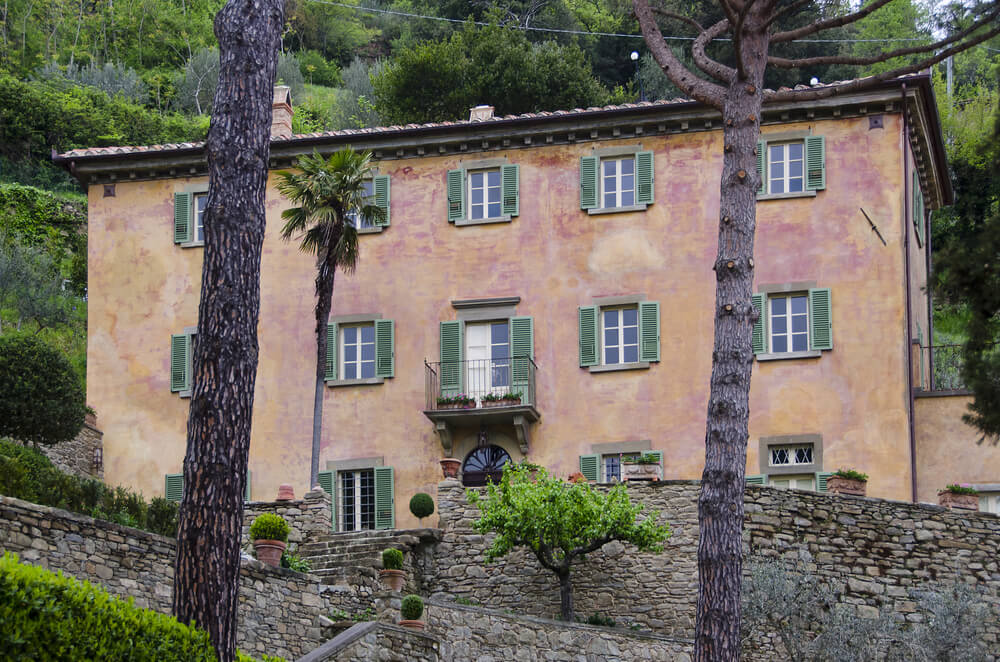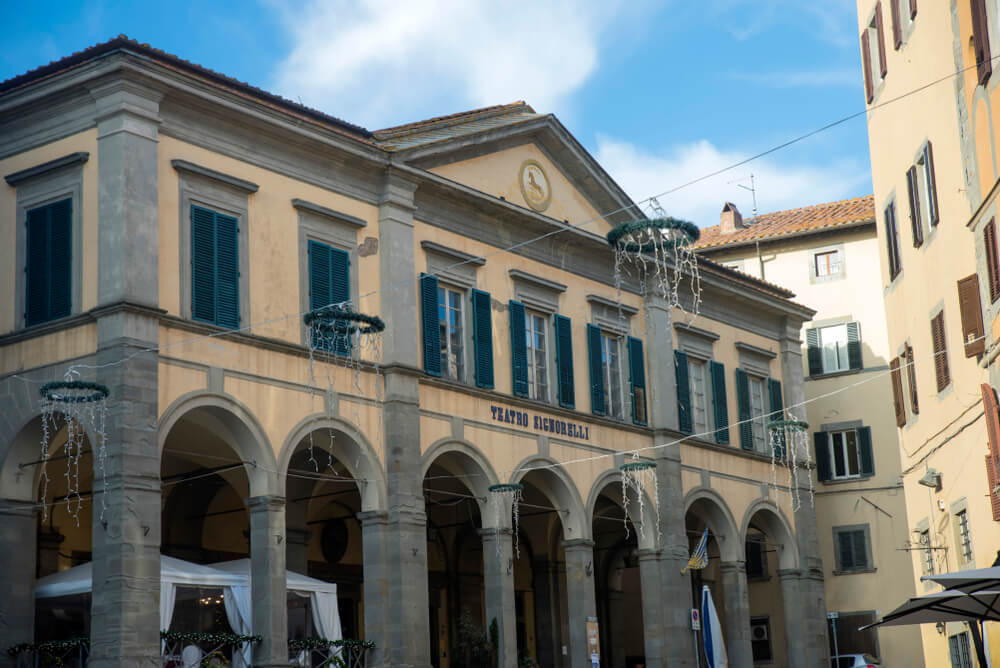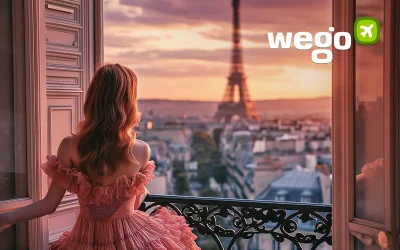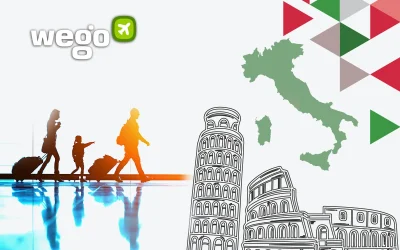This article has been reviewed by Wego’s editorial team to ensure that the content is up to date & accurate.
When times are trying, and we need a little motivation to try again, it always helps if we can board a flight of fancy. What better way to do that than by taking a page out of Under the Tuscan Sun, which is a film based on Frances Mayes’s memoir by the same name.
Embarking on our journey in sunny San Francisco, we find ourselves amidst the golden glow, yet witnessing the colours of Frances’ life turn grey as she navigates the aftermath of her divorce. The silver lining comes with a first-class trip to Italy from her best friend, marking the true start of her transformative journey.
So, pack your sunscreen and join Wego in this compact Italian adventure, where sunshine, sunflowers, and midnight rain weave a captivating tale!
Cathedral of Santa Maria del Fiore, Piazza del Duomo, Florence

This is the very first scene of Italy that graces our screen as Frances follows a sunflower in pouring rain. Santa Maria del Fiore is the third-largest church in the world. It was founded by the Florentine Republic in 1296 and has been open to the general public since 1436.
The title “Santa Maria del Fiore” (Our Lady of the Flower) makes an allusion to the name of the city, “Florentia”, or “city of flowers”, “destined to bloom”, and to its emblem, the Florentine Lily.
For those seeking a fresh start in Italy, this cathedral stands as an ideal beginning. Open to everyone without charge, it is crucial to dress modestly for this sacred space.
Please note that sandals, hats, sunglasses, bulky backpacks, and bags are not permitted within the cathedral
Piazza della Repubblica, 27, Cortona

“The piazza is an ongoing party, and everyone is invited, ” said Frances, and true to her words, the Piazza is indeed a merry place. Located in the heart of Cortona and built in the 1200s, Piazza della Repubblica has been the centre of the city since the Roman times. Before becoming a town hall, it used to be the seat or the home of the captain or the political ruler at the moment, and a bell tower was added in the 15th century.
Today, you can sit on the steps and enjoy the scene of life taking place in front of you as you bask in the sunshine, just as Frances did. While you are at it, you can grab a cup of cappuccino or tea from the outdoor cafes, a glass of wine from the local wine shops, or fresh fruits from the local market.
In a cinematic parallel, we witness Frances relishing a grape on these steps, describing it as tasting “purple,” while delighted tourists explore an authentic Italian produce market.
Piazza del Republica is pivotal in the film, marking Frances’ first encounter with Katherine and setting the stage for their unfolding story. Cortona, both in the film and the book, emerges as a character itself, with Frances’ house and the iconic Bramasole depicted in a picture discovered in this very place.
Villa Laura, Strada Provinciale Val di Pierle, Cortona

Initially resistant to the idea of purchasing a house, especially an old one requiring renovation, Frances finds herself drawn back to the prospect when her bus passes by a villa, offering her a real-life glimpse.
The villa, cleverly named Brahmasole (yearning for the sun in Italian), captures our hearts in the film and evolves into a character itself, now bearing the name Villa Laura.
Situated on the same 17th-century estate overlooking the hills just outside Cortona, Tuscany, Villa Laura endures with possible upgraded amenities, sparing tenants from the challenges Frances faced. The villa is available for weekly rentals throughout the year
Teatro Signorelli, Piazza Luca Signorelli, Cortona

Taking a break from helping the construction workers remodelling her house, Frances heads over to Teatro Signorelli at Piazza Luca Signorelli to watch an Italian version of George of the Jungle.
Teatro Signorelli was constructed in the 1850s and has been a hub for important cultural events for centuries. It has also been used as a cinema for many years and has a conference room and a café.
If you visit Cortona during summer, be sure to check out their festival packages from their website to indulge in some cultural extravaganza.
Piazza Grande, Montepulciano

Nestled in Montepulciano’s picturesque Piazza Grande, one of Italy’s most enchanting squares, you’ll discover a unique L-shaped enclave housing historical buildings. Piazza Grande pulsates with life year-round, transforming into a vibrant stage during the summer for the Cantiere Internazionale d’arte’s theatrical performances.
If your visit aligns with the last week of August, a spectacular event awaits: the Bravìo delle Botti. This spirited competition sees the town’s eight districts vie for a painted cloth, “Il Panno,” by skillfully rolling 80 kg wine barrels. Originating in 1974, this annual race replaced a historic horserace dating back to 1373.
In the film, Piazza Grande graces the screen twice. During the traditional flag waving, Pawal, one of Frances’ Polish workers, competes to win the hearts of his girlfriend’s parents. Later, the square reappears as Katherine performs a scene from La Dolce Vita in a specially built fountain, existing solely for cinematic purposes
Sanctuary of the Madonna di San Biagio

Situated outside Montepulciano in San Biagio, this church stands as a significant exemplar of Italian Renaissance architecture, erected between 1518 and 1540. Saint Virgin Mary, known as Santa Maria, assumes a pivotal role in Frances Mayes’ life upon her arrival in Cortona. Legend has it that the sanctuary was constructed after two women, Antilia and Camilla, Mary’s eyes, painted on a fresco, move.
Towards the film’s conclusion, the church’s interior comes into view as young love prevails, and Pawal and Chiara exchange vows, blessed by both their families
Piazza Venezia, Rome

Amidst the renovation, Frances decides to take a break from rewinding the old tape, which always pauses at the moment things start falling apart in her life; she takes a bus and goes to Rome. The bus stops at Piazza Venezia, and we get a glimpse of the Altar of the Fatherland building in the background. This location is famous for having its cameo in several iconic films such as Roman Holiday.
Piazza Venezia, or Venice Square, is located at the foot of the Capitoline Hill. Four major roads meet here, making Piazza Venezia famous for its chaotic traffic flow in Rome. The four roads are Via del Corso, Via del Plebiscito, Via di Teatre Marcello and Via dei Fori Imperiali.
Piazza Venezia gets its name from Palazza Venezia, which used to be the Embassy of the Republic of Venice and was used by the Austrian ambassador. The Italian government took over the palace during the First World War.
Today, Palazzo Venezia is a museum of Medieval and Renaissance art and is also known as Museo di Palazzo. Today, Palazzo Venezia is a museum showcasing Medieval and Renaissance art, referred to as Museo di Palazzo. The building opens at 9:30 AM, and the entrance to their picturesque garden is free.
Positano Beach, Amalfi Coast

We get to see the most gorgeous views of Positano Beach in the film when Frances’ trip to Rome turns into a new adventure. Though the adventure did not quite go in the way we would have wanted, we still got to see the Amalfi Coast in all its glory through Frances’ eyes.
The beach is divided into private and free areas. No matter which of these beaches you get to step your feet into, the clear blue water, the sand, and the skyline wait for you with open arms!
Though our flight of fancy ends here, we hope that you feel inspired to plan a vacation soon to escape the humdrumness of life for a while. “… all things will go on as they have before. …” Embrace some whimsical ideas and see where they lead. Perhaps you will end up finding new friends and chosen family just like Frances, and if not, then new memories to adorn your memory lane.












